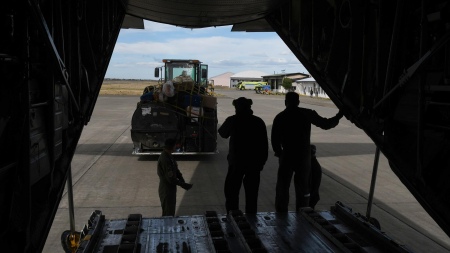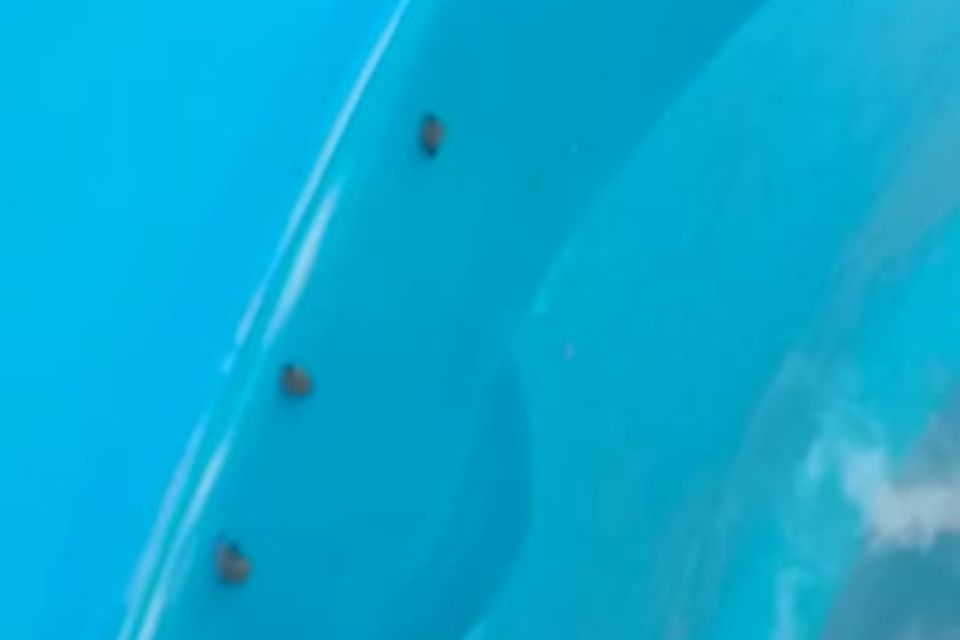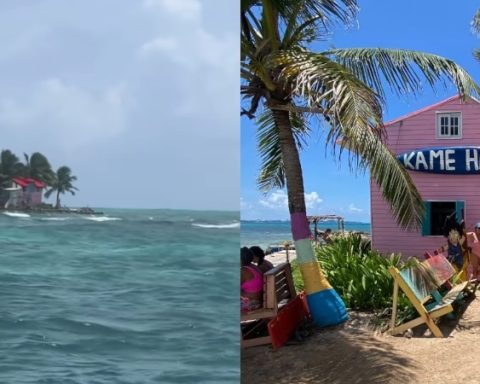The Antarctic Summer Campaign (CAV) 2022/2023 entered its second phase with the departure of the icebreaker “Almirante Irizar” from the Ushuaia naval base, the Ministry of Defense reported on Monday.
On board the ship, specialists from the Naval Hydrography Service (SHN) continue with the monitoring the path of the giant iceberg It broke off the Brunt Ice Shelf.
In addition, this itinerary will also proceed to the evacuation of historical waste and progress will be made on the installation of the Orcadas multidisciplinary laboratory.
The personnel specialized in marine glaciology of the Naval Hydrography Service (SHN), which monitors the giant iceberg A81 in real time, reported that in the last 48 days the fixed sea ice attached to its western sector had detached.

Then now the iceberg is free of obstacles for its driftand that since its rupture on January 23, it has moved 11 kilometers to the west.
In addition, the monitoring of another 15 large icebergs that were delimited from the detachment of the Brunt barrier and that may derive differently from A81 began.
This follow-up, through satellite images, is a fundamental input to determine the route of the “Irizar” on its way to the Belgrano II Joint Antarctic Base.

From Defense it was reported that the icebreaker is carrying two metallic superstructures three meters high for the two antennas that the National Commission for Space Activities (CONAE) will install at the base.
These superstructures are designed and manufactured to measure for the project to support the antennas and radomes, with their 6.1 meter diameter parabolic receivers, in extreme weather conditions.
Belgrano II has outstanding characteristics for monitoring polar orbiting satellites, such as SAOCOM 1A and 1B.
#AntarcticCampaign | The CAV 22/23 began its second stage with the departure of the icebreaker ARA Alte. Irizar from Ushuaia.
It will arrive at the Orcadas and Belgrano II bases, the southernmost, to carry out various logistical and personnel withdrawal tasks.
? https://t.co/UQ3qqqqp0t pic.twitter.com/LRQhkXVBT6
– Ministry of Defense (@MindefArg) January 30, 2023
From there it will be possible to contact the Argentine satellites 15 times a day, against 4 and 7 times a day that can be observed from the stations of Córdoba and Tierra del Fuego. The final installation of the antennas is planned for the next campaign.
In addition, in Orcadas, the next destination of the “Irizar”, the unloading of material is expected to continue with the assembly of the multidisciplinary Laboratory. It is also planned to work on the installation of three autonomous terminals for measuring volcanological and seismological parameters on Deception Island.
The first stage of the CAV 2022/2023 was fulfilled with the arrival of the icebreaker “Alte. Irizar” to the City of Ushuaiaafter more than a month of navigation since its departure from the Naval Station in the city of Buenos Aires.

In this way, the Joint Antarctic Command (COCOANTAR) under the Joint Chiefs of Staff of the Armed Forces fulfilled the previously planned tasks in due time and form together with the National Antarctic Directorate (DNA), the National Meteorological Service (SMN) and the National Hydrography (SHN) in 2022, as part of one of its main functions: logistical support for scientific activity in Antarctica.
During this period, a large part of the resupply planned for the Marambio Joint Antarctic Base (BAC) was completed, to which was added the supply of the BAC Esperanza, Orcadas, Petrel and the Carlini Scientific Base.
#AntarcticCampaign | The ARA Estrecho San Carlos advisory transported the crews to the Primavera and Brown temporary bases.
Later, at the Petrel base, engineers from the Armed Forces and materials disembarked to continue with the improvement of the runway and the construction of a dock. pic.twitter.com/UYtL3j46M0
– Ministry of Defense (@MindefArg) January 30, 2023
Likewise, the temporary base BAC Deception was opened and different camps were deployed for field work. All this activity with the movement of corresponding personnel, both scientists and technicians as well as the military that make up the new endowments of the bases or that will carry out their activities throughout the summer season.
On the other hand -at this stage- collaboration was also provided to Antarctic programs of friendly countries: transfer of material and cargo between two Uruguayan Antarctic bases (ECARE and Artigas), and transfer of Ecuadorian scientific and military personnel from the Frei Base (Chile ) to the Maldonado Scientific Station.


















